Roll out the welcome mat for our warm season avian friends — especially the hummingbirds! These coupon-qualified cultivars are all you need to successfully attract hummingbirds to your yard.
With the onset of warmer days comes beautiful blooms, colorful butterflies and the return of many of our warm season avian friends — especially the many hummingbirds that arrive in our area.
Commonly seen in San Antonio are the black-chinned hummingbirds and ruby-throated hummingbirds. Every once in a while if you’re lucky, you may stumble upon some of the less common hummingbirds. These birds are commonly called vagrants, meaning they’re identified outside of their typical range. I’ve heard tales of the beautiful green violet-ear, broad-billed and the relatively large magnificent hummingbird showing up in the San Antonio area.
Enticing these flying kaleidoscopes of color to your yard is simple. Just plant hummingbird-attracting plants from the WaterSaver Landscape coupon to keep these lively little critters well-fed, improve the aesthetics of your landscape and save water.
Seek out drought-tolerant perennials with long bloom periods.
Turk’s cap (Malvaviscus arboreus var. drummondii) — This Texas native has heart-shaped, deep green leaves topped with long-lasting red flowers that are favored by hummingbirds. Later in the year they produce edible, red fruits that are relished by songbirds. Typically seen growing on river banks and under trees, this drought-tolerant perennial handles shady and partly shady conditions.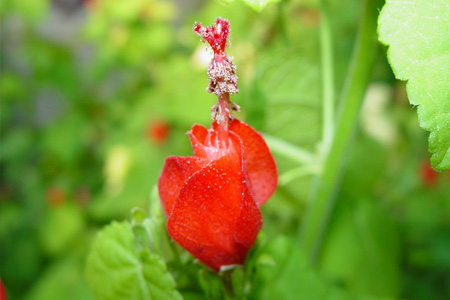
Red Yucca (Hesperaloe parviflora) — A native of South Texas, this coral, red or yellow-flowered plant is highly attractive to hummingbirds. This plant can stand up to extreme sun and xeric conditions.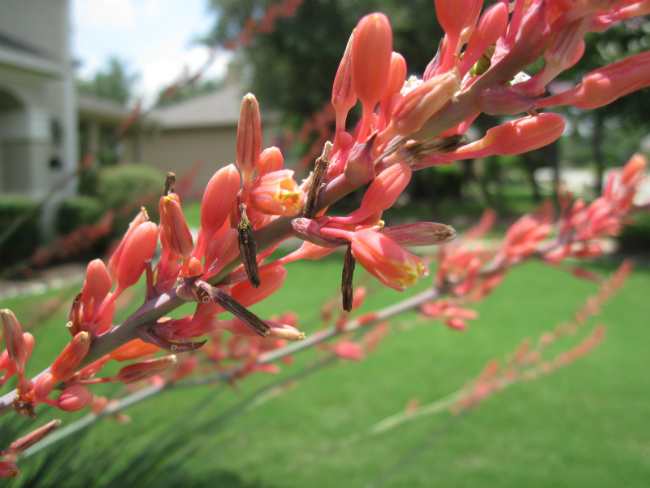
Various Salvias (Salvia spp.) — There are many species of Salvia that do well in the central Texas area, many of which are native. However, keep in mind that hummingbirds typically prefer S. darcyi, S. coccinea, S. greggii, S. pentstemonoides, S. microphylla, S. madrensis and S. leucantha. Colors of these species can be yellow, red, pink, white or purple.
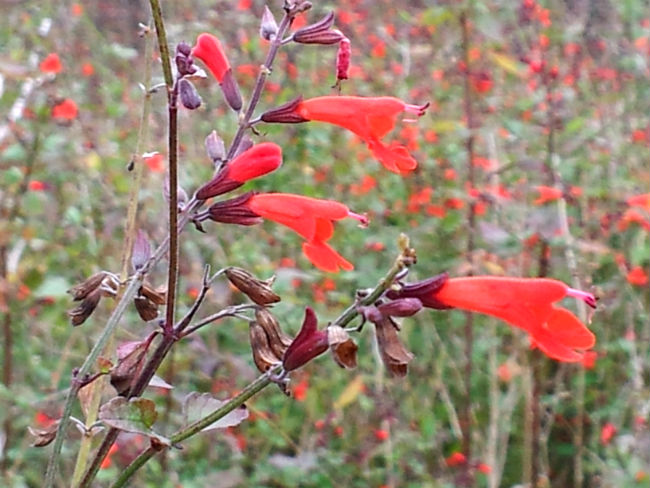
Esperanza (Tecoma stans) — Most nurseries carry the tropical variety of this plant, but when searching for the native stock, it may require a little calling around. The native variety (Tecoma stans var. angustata) grows in West Texas and has significantly narrower leaves than the tropical variety (Tecoma stans var. stans). Both varieties are drought-tolerant, sun-lovers with bright yellow, trumpet-shaped flowers that are attractive to hummingbirds.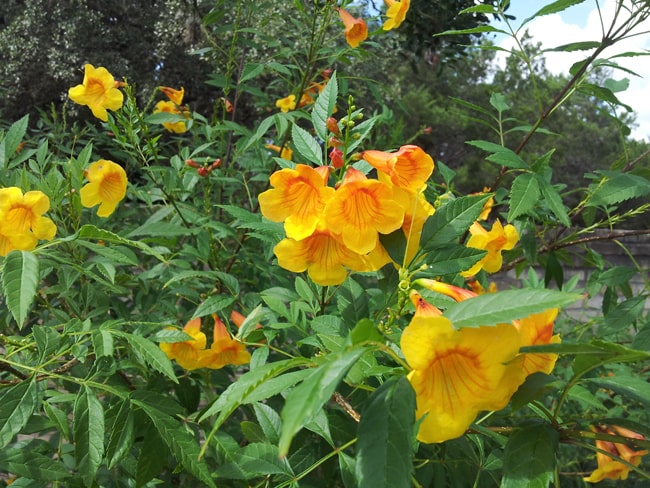
Mexican Honeysuckle (Justicia spicigera) — This tropical American native may surprise you in winter with its fiery orange display of color. It’s drought-tolerant and a great addition to your landscape due to its ability to bloom in winter. Mexican honeysuckle can handle sun or partial shade.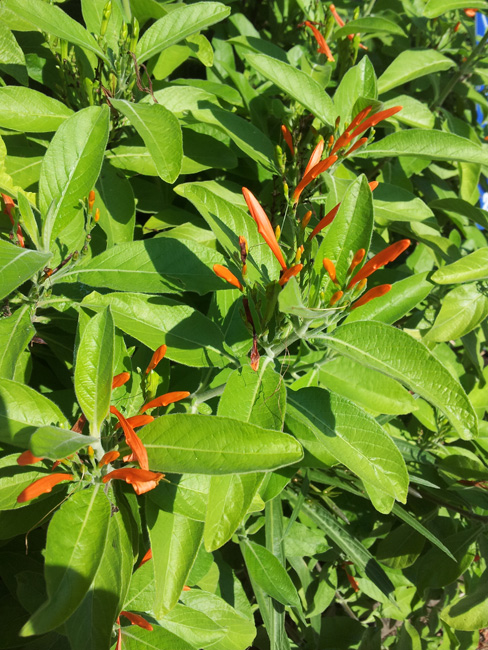
Firebush (Hamelia patens) — This sun-lover is native to Florida and ranges from Mexico to Argentina in central and south America. While not native to Texas, it will stand up to Texas heat and is a favorite nectar source of hummingbirds.
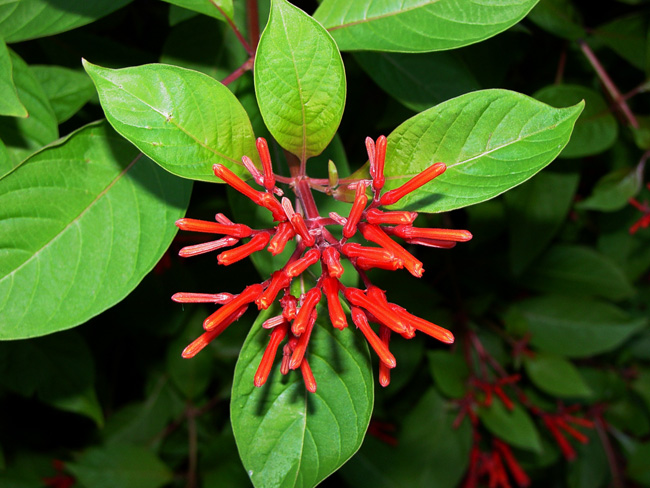
Shrimp Plant (Justicia brandegeeana) — A native of Mexico, this plant of the Acanthus family is well-noted for its ability to attract hummingbirds. It has interestingly shaped yellow or red flowers. Plant in shade or partial shade.
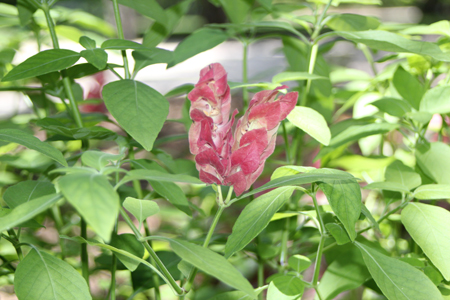
Rosemary (Rosmarinus spp.) — This drought-tolerant and versatile Mediterranean native remains interesting throughout the year with its evergreen foliage. Also a favorite culinary herb, its blue flowers provide nectar for hummingbirds during the winter months.
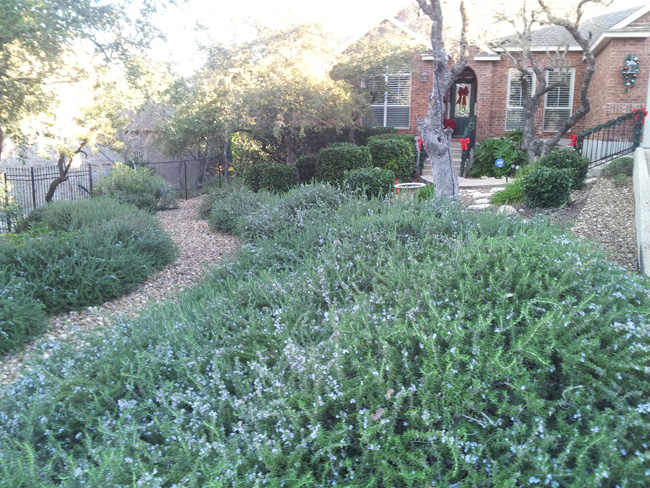
Pride of Barbados (Caesalpinia pulcherrima) — Everyone is happy to see the bright red and orange blooms of Pride of Barbados during the warmest months of the year. Hummingbirds are particularly delighted to see this plant in flower as it provides plenty of nectar to support them when many other plants have given up in the Texas heat.
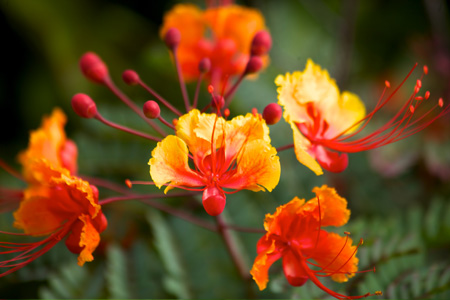
Some dangers to hummingbird populations include habitat destruction and unsanitary hummingbird feeders. In the hot, humid months feeders need to be thoroughly and regularly cleaned. This requires constant vigilance to keep away potentially deadly pathogens.
Actually, you can skip the feeders and maintenance all together — plants are all you need to successfully attract hummingbirds, especially when you plant some of the plants we’ve listed above. And be sure to ask your nursery person if plants are treated with systemic insecticides, which could harm our little friends.
Hummingbird facts:
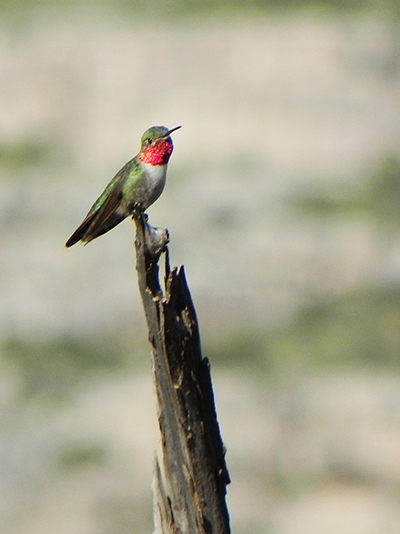
- Hummingbirds only reside in the western hemisphere.
- 10 percent of hummingbird species are endangered.
- There are more than 300 species of hummingbirds in the world.
- Texas has 18 documented species of hummingbirds — more than any other state — they include: ruby-throated hummingbird, black-chinned, Allen’s, Anna’s, berylline, broad-billed, calliope, blue-throated, lucifer, Costa’s, green-breasted mango, buff-bellied, rufous, broad-tailed, green violet-ear, magnificent (my personal favorite!), violet-crowned and the white-eared.
- The smallest bird on the planet is the bee hummingbird; found only in Cuba, this wee one weighs about 2 grams and measures about 2.4 inches long.


